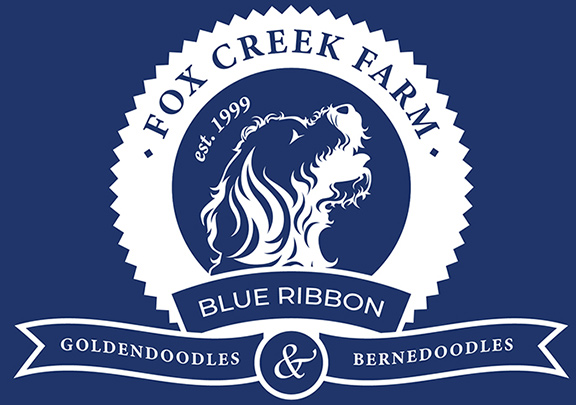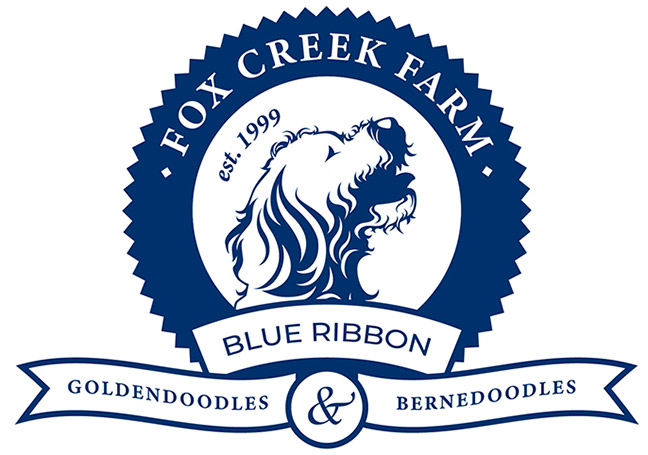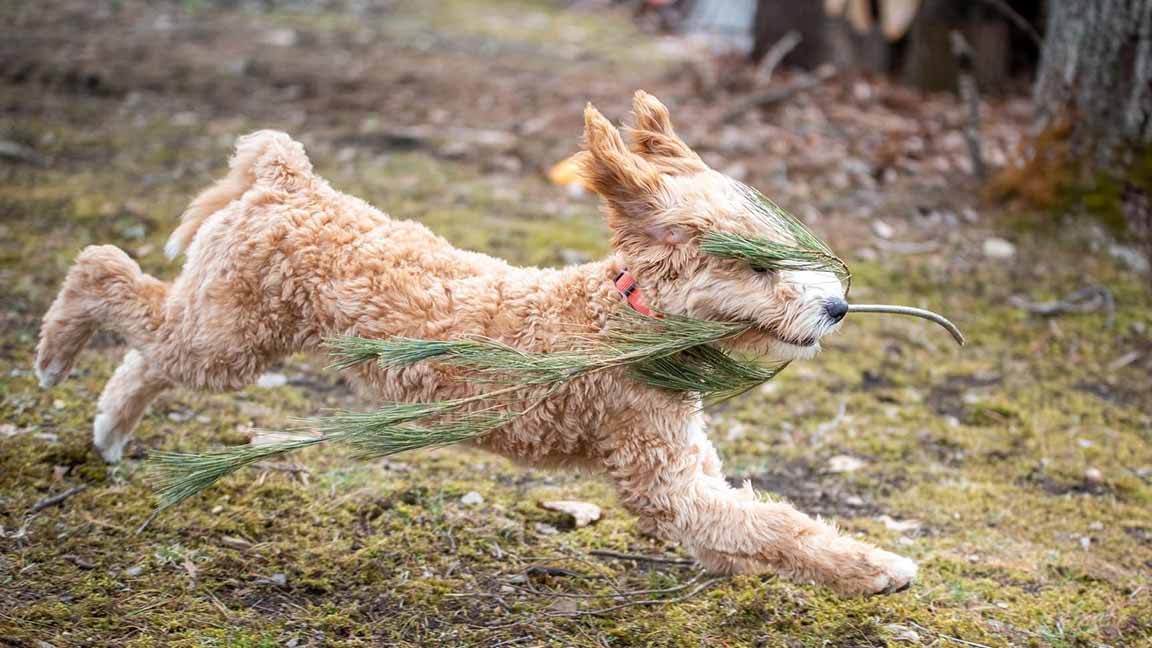
Why Do Goldendoodles Change Colors?
If you’ve ever met a Goldendoodle puppy and then seen that same dog a year later, you might be surprised—their coat often looks like a completely different shade. Many new owners ask, “Why do Goldendoodles change colors?” The answer is both fascinating and completely natural.
At Fox Creek Farm Goldendoodles and Bernedoodles, we’ve watched countless puppies grow and change, and one thing is certain: these color transformations are part of the magic of the breed. Whether your puppy starts out deep red, creamy apricot, or a rich chocolate, that shade is likely to shift over time. No matter what color changes occur, every one of our dogs remains hypoallergenic, making them a wonderful choice for families with allergies.
In this blog, I’ll walk you through why Goldendoodles change colors, what factors influence this process, and why it’s something to embrace rather than worry about.
Why Do Goldendoodles Change Colors? Understanding the Basics
 The Goldendoodle’s coat is the result of combining the Golden Retriever and the Poodle—two breeds with very different coat genetics. This mix creates a wide variety of possible colors and textures, but it also means that change is inevitable.
The Goldendoodle’s coat is the result of combining the Golden Retriever and the Poodle—two breeds with very different coat genetics. This mix creates a wide variety of possible colors and textures, but it also means that change is inevitable.
From the moment they’re born, Goldendoodle puppies have a soft, fluffy coat. This is their puppy coat, and while it’s irresistibly cuddly, it’s also temporary. As they grow, they change that first coat and develop their adult coat, which can be a completely different color or simply a lighter or darker version of what they started with.
Some of the most common shifts include:
- Fading: Rich reds and dark apricots softening to a light gold or cream.
- Intensifying: Lighter shades deepening into richer tones.
- Pattern changes: Subtle markings becoming more or less visible as the coat matures.
If you’re wondering why Goldendoodles change colors, the short answer is genetics. But as we’ll explore in the next sections, it’s also about the natural progression from puppyhood to adulthood, combined with environmental influences.
The Role of Genetics
When it comes to answering why Goldendoodles change colors, genetics is the biggest factor. The Golden Retriever and the Poodle each bring unique color genes to the mix, and the way those genes combine determines not just your puppy’s starting color, but how that color will evolve.
Some of the key genetic influences include:
- Dilution genes – These can soften a rich color over time, turning a deep red into a warm cream or a chocolate into a lighter café au lait.
- Fading genes – Common in Poodles, these genes gradually lighten the coat during the first couple of years.
- Pattern genes – These affect the distribution and intensity of markings, which may become more pronounced or fade away as the coat changes.
Every Goldendoodle is genetically unique, which is why no two color transitions are exactly the same. This is also why two puppies from the same litter can grow up to have completely different coat shades.

Puppy Coat vs. Adult Coat
Another essential part of why Goldendoodles change colors is the transition from their soft, fluffy puppy coat to their more textured adult coat. This change usually begins between 6 and 12 months of age, though the exact timing can vary.
Here’s what typically happens:
- Puppy coat – Lighter in texture, fluffier, and often brighter or more vivid in color.
- Adult coat – Coarser, sometimes curlier, and often lighter or darker in shade than the puppy coat.
The process can be gradual or surprisingly quick. You may notice new textures coming in around the face and paws first, with the rest of the coat following over several months.
No matter the change in color or texture, at Fox Creek Farm Goldendoodles and Bernedoodles, all our dogs remain hypoallergenic. Whether your Goldendoodle grows into a soft cream, deep gold, or a mix of shades, their coat’s allergy-friendly quality stays the same.
Environmental and Health Influences
While genetics play the biggest role in why Goldendoodles change colors, the environment and overall health of your dog can also have an impact. These factors usually create subtle changes rather than dramatic transformations, but they’re still worth understanding.
Some common influences include:
- Sun exposure – Just like human hair, a Goldendoodle’s coat can lighten when exposed to sunlight over time. Dogs who spend more time outdoors may develop sun-kissed highlights, especially in the summer months.
- Nutrition – A balanced diet rich in high-quality proteins, healthy fats, and essential vitamins supports optimal coat health. While it won’t completely change your dog’s color, poor nutrition can lead to dullness or uneven tones.
- Grooming products – Shampoos, conditioners, and grooming sprays can subtly affect coat brightness and texture. Using gentle, hypoallergenic products helps maintain natural luster without causing irritation.
- Overall health – Skin conditions or hormonal changes may influence coat vibrancy, though this is less common.
At Fox Creek Farm Goldendoodles and Bernedoodles, we focus on holistic puppy care to ensure that every coat—regardless of shade—remains healthy, soft, and hypoallergenic.
Common Color Change Patterns Seen in Goldendoodles
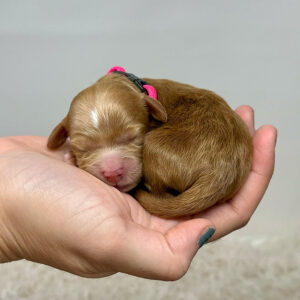 When new owners ask why do Goldendoodles change colors, they’re often curious about what those changes might actually look like. While every dog is unique, certain patterns are more common than others.
When new owners ask why do Goldendoodles change colors, they’re often curious about what those changes might actually look like. While every dog is unique, certain patterns are more common than others.
Some typical transformations include:
- Apricot to cream – Puppies born with a deep apricot coat often fade to a warm cream or pale gold as adults.
- Red to gold – Vibrant red puppies can soften into a medium golden shade over time.
- Chocolate to café au lait – Rich brown coats may lighten to a milky, taupe-like color.
- Pattern definition – Parti or phantom Goldendoodles may see their markings sharpen or blur as the coat matures.
These changes don’t happen overnight. Most Goldendoodles experience gradual transitions over their first two years, giving owners the joy of watching their dog’s appearance evolve. Regardless of the final color, their personality, temperament, and hypoallergenic qualities remain the same.
Tips to Manage & Embrace Your Goldendoodle’s Color Change
If you’re wondering how to best care for your dog during this transformation, the good news is that coat color changes require no special treatment—just consistent grooming and quality care. The key is to focus on keeping your Goldendoodle’s coat healthy so that whatever shade they end up with looks its best.
Here are some tips:
- Use gentle grooming products – Choose hypoallergenic shampoos and conditioners to maintain coat softness and shine.
- Protect from excessive sun – Provide shaded areas during peak sunlight hours to help minimize bleaching effects.
- Maintain a balanced diet – High-quality food supports both skin and coat health, promoting a vibrant appearance. Giving a high quality salmon and pollock oil will help keep healthy skin and coat.
- Regular brushing – Prevents matting and allows you to keep an eye on new textures or color changes as they appear.
Ultimately, the best approach is to embrace the change. It’s part of what makes each Goldendoodle so unique.
Our Commitment to Hypoallergenic Coat Health
At Fox Creek Farm Goldendoodles and Bernedoodles, our dedication goes beyond appearance. No matter why Goldendoodles change colors, their hypoallergenic qualities never fade. We prioritize coat health from the very beginning through responsible breeding, high-quality nutrition, and careful grooming routines. This means you can enjoy every shade and pattern knowing your dog will remain allergy-friendly and comfortable throughout their life.
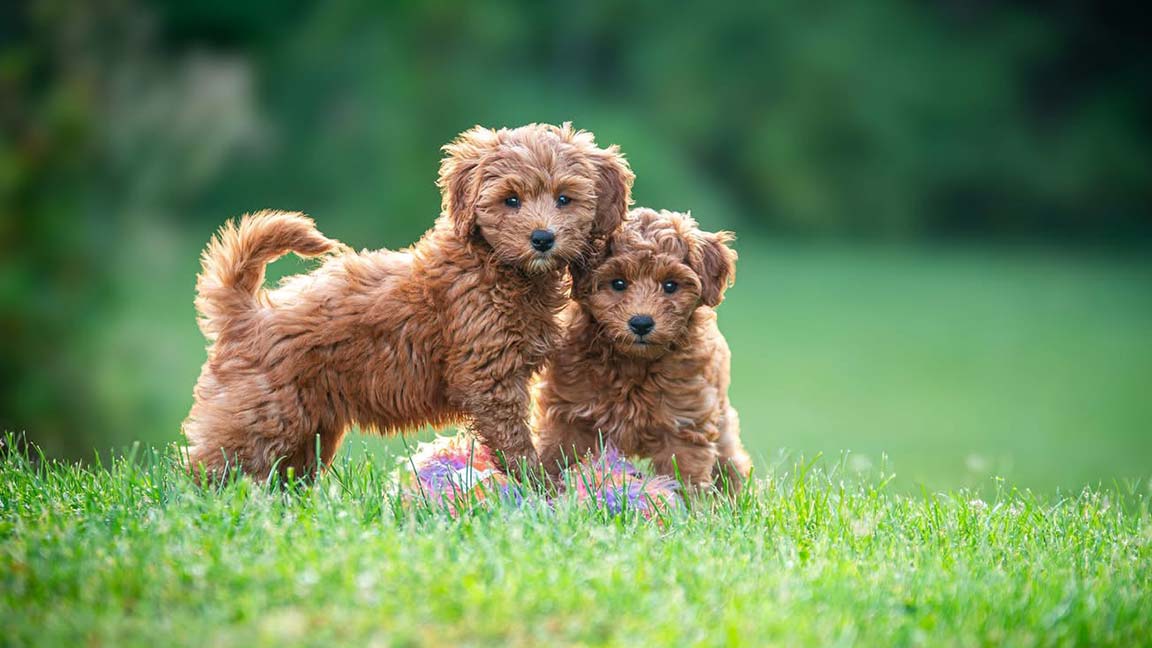
Frequently Asked Question: Why Do Goldendoodles Change Colors?
Q: Why do Goldendoodles change colors?
A: The primary reasons are genetics and the natural shift from puppy to adult coat. Environmental factors such as sunlight and grooming habits can also influence subtle changes.
Q: Will my Goldendoodle stay hypoallergenic if their color changes?
A: Yes. Coat color changes do not affect the hypoallergenic nature of the coat.
Q: Can I predict my Goldendoodle’s final color?
A: While you can sometimes guess based on parent colors and early coat signs, exact outcomes can vary greatly due to the mix of Golden Retriever and Poodle genetics.
Conclusion
So, why do Goldendoodles change colors? It comes down to a blend of genetics, growth, and natural influences over time. From rich reds fading to soft creams, to chocolates lightening into café shades, every shift is a beautiful reminder of your dog’s individuality. At Fox Creek Farm Goldendoodles and Bernedoodles, we celebrate these transformations and take pride in raising dogs whose coats are as healthy as they are stunning—no matter what shade they grow into.
Your Goldendoodle’s changing colors are just one chapter in their lifelong story with you. Cherish it.
